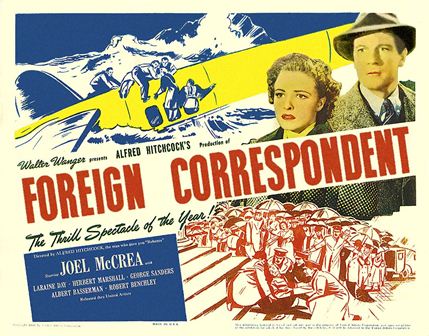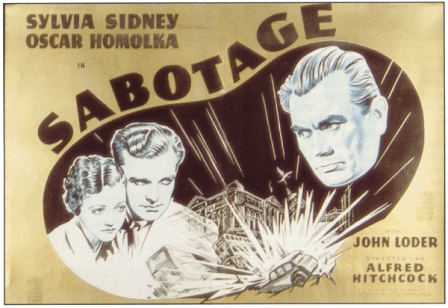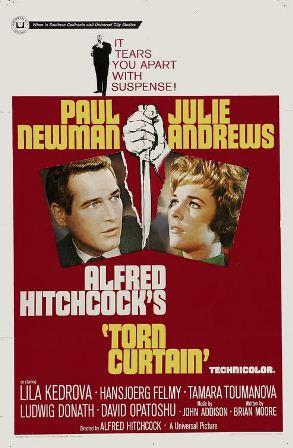CHICAGO – In anticipation of the scariest week of the year, HollywoodChicago.com launches its 2024 Movie Gifts series, which will suggest DVDs and collections for holiday giving.
Film Feature: The 10 Best Hitchcock Jaw-Droppers
CHICAGO – Sacha Gervasi’s “Hitchcock” (which we will review Wednesday) takes moviegoers back to the landmark year when the Master of Suspense reached the final peak of a career that spanned over five decades.
Alfred Hitchcock’s artistry, ambition and showmanship where at an all time high when he made 1960’s “Psycho,” a game-changing shocker that galvanized audiences and went on to become his most immortal and influential picture. Yet it is far from the only Hitchcock masterwork that caused audiences’ jaws to drop to the floor. As film buffs become reacquainted with the Master through the recent slew of biopics and Blu-ray releases (including a glorious 15-disc Blu-ray set we will review tomorrow), Hollywood Chicago presents its own list of the all-time greatest Hitchcock jaw-droppers — ten timeless scenes that still manage to jolt, exhilarate and inspire generations of cinephiles around the world.
10. The Crash in “Foreign Correspondent” (1940)

Foreign Correspondent
In “Cast Away” and “Flight,” Robert Zemeckis has proven to be the modern master of staging plane crashes by keeping the camera largely confined within the walls of the doomed aircraft as it makes its fateful descent. Yet the scene that set the gold standard for such an audacious approach was featured in “Foreign Correspondent,” Hitchcock’s second American effort and the first that exuded his trademark blend of wit and suspense. Though the film is packed with memorable sequences, its most astonishing set-piece is the climactic plane crash, which is still convincing when viewed 72 years later. Though Hitchcock does cut to a few exterior shots of the plane, he mainly focuses on the escalating chaos unfolding inside, as passengers struggle to brace themselves for the moment when their plummeting aircraft hits water. In an extraordinary shot, the ocean below is viewed through plane’s cockpit as it gets closer and closer. This footage was shot by a stunt pilot and projected on rice paper, which blew apart at the precise moment of impact, as water exploded onto the set through two chutes. It’s a magnificently crafted illusion that still retains its power.
9. The Bomb in “Sabotage” (1936)

Sabotage
Sometimes artists can be their own harshest critics. Hitchcock always regarded the best sequence in this under-appreciated gem to be a mistake, since it results in a bomb indeed going off and tragically killing innocent lives. Yet that’s precisely what makes the scene so potently stomach-churning, as a young boy dutifully travels to deliver a package while remaining blissfully unaware of the fact that it’s carrying explosives. His journey is interrupted by an assortment of amusements, as Hitchcock continues to cut to a clock ticking down the minutes. Once the bomb finally explodes before reaching its destination, the film abruptly cuts to the laughter of characters who haven’t yet received the terrible news. The theme of laughter provoked by violence runs throughout the film, as the devastated heroine later comes upon a theater full of kids giggling at the morbid cartoon, “Who Killed Cock Robin?” (this film also includes some of the earliest examples of Hitch’s unsettling bird imagery, foreshadowing “Psycho” and “The Birds”). Since Hitchcock’s films routinely inspire viewers to laugh at inappropriate moments, this film attempts to shed light on the darkness that resides within us all. Only this time, we’re not laughing.
8. The Long, Long Murder in “Torn Curtain” (1966)

Torn Curtain
Though widely regarded as a failure, this flawed effort is far more watchable than Hitchcock’s interminable 1969 follow-up, “Topaz.” In the midst of the director’s half-hearted attempts at constructing a lightweight espionage vehicle for his miscast (and entirely misused) leads, Paul Newman and Julie Andrews, there arrives a scene so shockingly brutal and tonally jarring that it removes any shadow of a doubt that old Hitch had darker thoughts on his mind. When confronted by a sinister security officer who threatens his life, Newman decides that he must dispose of him quickly. With the help of a timid woman armed with a butcher wife, Newman struggles to kill the man, but the job proves to be much more difficult (and much messier) than it may have appeared. The woman stabs the officer, but the wound is far from lethal. Then she breaks his kneecaps with a shovel before dragging his head into the oven. His body is held to the ground as his life is drained away with every last excruciating wheeze. Suddenly, the plot evaporates as Hitch forces the audience to regard the primal tragedy of a life being extinguished before our eyes. It’s as horrific as it is oddly humanistic.


